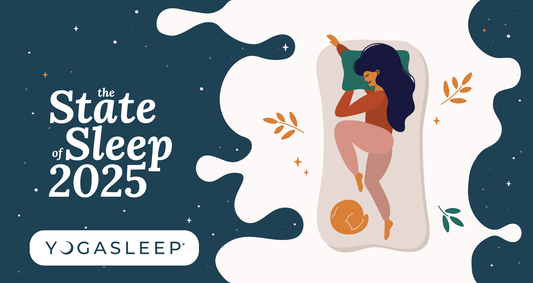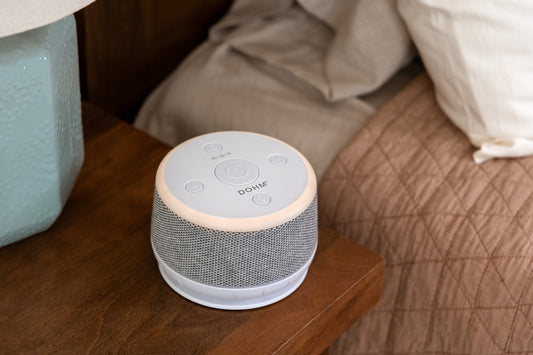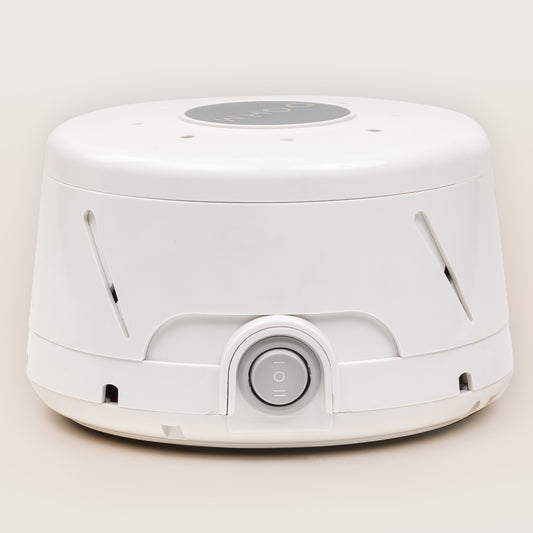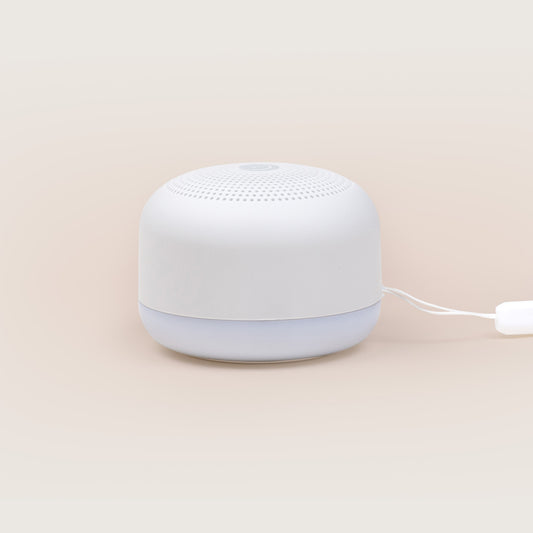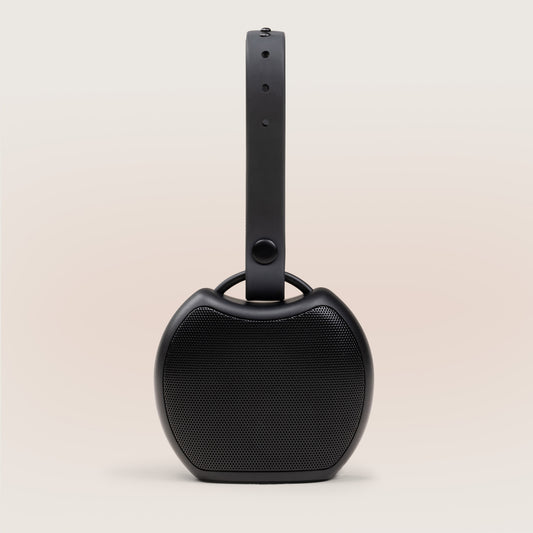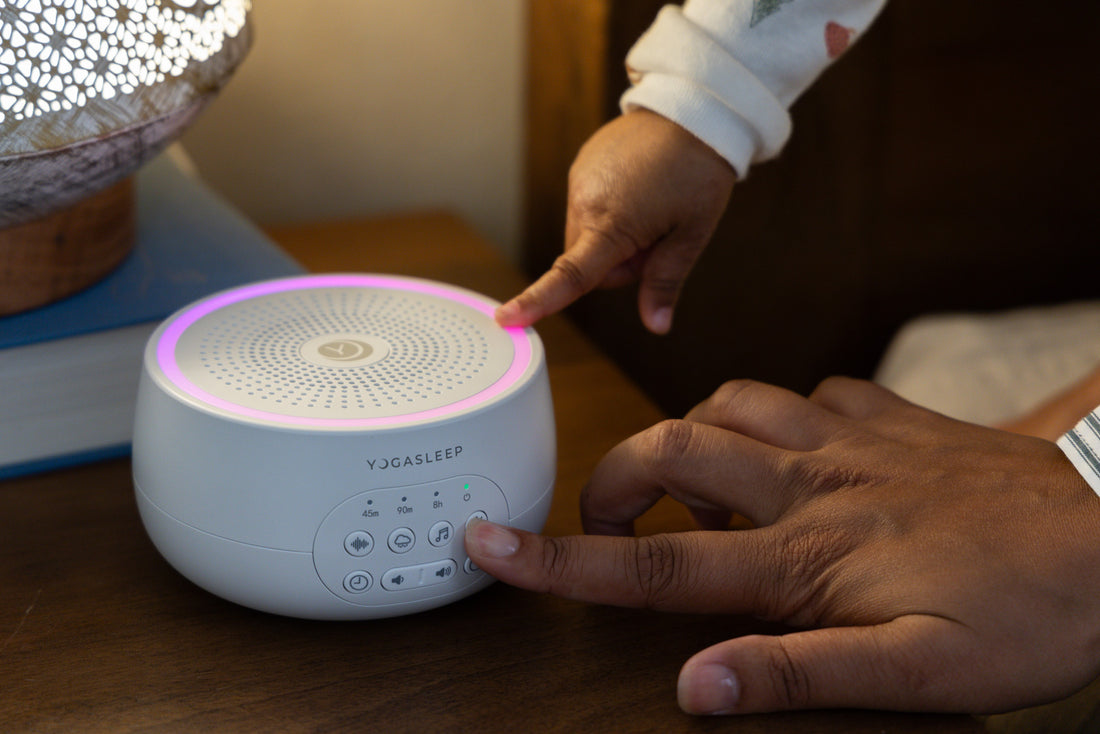
Your Guide to Pink Noise, White Noise, & Brown Noise
Most of our readers will be familiar with the concept of white noise, and some may have even heard of pink noise, but we wonder how many people know that there’s an entire spectrum of sound available to the human ear? Much in the same way that there are different colors of light, there are similarly different “colors” of sound.
Here at Yogasleep, we’ve been focused on how to use this spectrum to help our customers access the best night’s sleep possible, and we’ve been on this journey for quite a long time. It’s true! We invented and sold the very first white noise machine back in 1962. We’ve come a long way since then, updating our sound machines as we learn more and more about the full sonic spectrum. Now, most of our "white noise machines" are in fact pink noise machines. This article will explain why we’ve focused on producing pink noise machines in recent years. Learning more about how pink noise works and how it can help you sleep is empowering and can even help improve your life. It also doesn't hurt that it's a low-cost, natural approach to better sleep and overall wellness.
What is Pink Noise?
The best way to explain pink noise is an ambient noise often played in the background to help with focus and to drown out other sounds that might interfere with concentration or sleep. It’s a softer, more mild version of white noise, which we generally think of as being similar to radio static. Pink noise emphasizes lower frequency sounds rather than high-frequency sounds. WebMD likens it to “a steady rain, wind rustling through trees, or waves on a beach.” For many people, this is much more pleasant to listen to for an extended period of time. The human body is incredible for so many reasons, but surely one of the most fascinating ones is how our eats pick up sound. Whenever we listen to music or hear a car door slam, the sound creates vibrations, which in turn create waves in the air. These waves enter our eardrums causing them to vibrate. Tiny hair cells within our eardrums are able to pick up different frequencies and pitches from the pattern of the vibrations caused by the waves. Playing pink noise creates a steady, calming sound for the eardrum to pick up on.
How Pink Noise Helps You Sleep
The reason why pink noise is so ideal for helping us sleep is that it works to “mask” other sounds. When we sleep in silence, the sound waves from a neighbor’s dog barking in the dead of night wakes us up because of “the change in sound,” and not necessarily the sound itself.
Pink noise is effective because it creates a steady background sound, which makes it so that a sudden, loud noise won’t be quite as jarring to our sleeping brains. As we mentioned above, the emphasis on lower-frequency sounds in pink noise is more satisfying for our sleeping brains, but there’s another aspect that makes it a clear winner when it comes to masking noise. In “The Many Colors of Sound,” Meghan Neal describes pink noise as being a “pattern” that falls somewhere between “pure randomness and correlated movement.” The fact that pink noise isn’t totally random, but also isn’t completely structured either, is part of what soothes our brains while we’re asleep. Yogasleep offers a whole collection of pink noise machines specifically engineered to help you sleep at night. We recommend working your pink noise machine into a nightly routine, signaling to the brain that it’s time to sleep.

What is White Noise?
Often when people refer to “white noise,” they’re talking about any background sound that helps them concentrate or sleep without realizing there are many different types of sound to choose from. White noise differs from other sounds, and specifically pink noise, in that it has no pattern at all and is instead the sonic embodiment of pure chaos. “It’s a mixture of all the frequencies humans can hear (20 Hz to 20,000 Hz), fired off randomly with equal power at each — like 20,000 different tones all playing at the same time,” that’s Meghan Neal again writing about white noise. Along with its pure randomness, white noise also includes an equal combination of frequencies both high and low. In comparison to pink noise, which features only low-frequency sounds. Another way to think of white noise is in terms of light. Just as the color of white is all of the colors on the light spectrum combined, so is white noise all of the frequencies of sound combined all at once. To the human ear, white noise sounds exactly like radio or television static.
Using White Noise for Sleep
In the same way that pink noise masks outside noises, white noise does the same, but because it includes all frequencies white noise may do a better job of blocking out disturbing noises while you sleep. Those who sleep with a fan or A/C unit going in the background are attempting to mimic white noise through the use of these appliances, but the result is not a completely accurate representation. Rather than the humming of a fan, white noise devices are much more adept at stopping jarring sounds from interrupting your concentration or sleep throughout the night. We know it can be hard to choose between a pink noise machine and a white noise machine, we’ve engineered a whole line of sound machines with both options along with the Wireless Duet White Noise Machine. When it comes to sleep, everyone has different preferences. Some like to sleep on their side or on their back, and some might prefer static white noise or soothing pink noise.
What is Brown Noise?
When it comes to sleep, there’s still another noise you should be familiar with and that’s brown noise or Brownian noise. Brown noise is the one type of sound named not after a color, but instead, after a person. Robert Brown was a botanist who lived during the 1800s and first discovered “Brownian motion,” whereby particles move randomly. Sometimes you’ll see brown noise referred to as red noise, but when it comes to the sound, they’re just different names for the same thing. Just like white noise, brown noise also generates sound randomly, but unlike white noise, energy decreases as frequency goes up and vice versa.
Remember, white noise is all frequencies all at once using equal energy. The change in energy or power, distinct to brown noise gives it more bass in the lower frequencies. This is different from pink noise in a subtle way, as pink noise decreases power as its notes get higher in frequency. CNN Health connects brown noise to “the rumble of strong winds, a rushing river or pounding surf.” There are those who claim that brown noise is the best for concentration, which is perhaps why The Cut crowned brown noise “the best work soundtrack” in 2019.
What is Black Noise?
Black noise, if we’re continuing to follow the color metaphor, is the absence of sound. It’s considered negative sound, or the cancellation of all frequencies. To the human ear, black noise can best be described as complete silence. While many of us may strive to achieve absolute silence, or black noise, to fall asleep, it may not be the best choice when it comes to staying asleep. When you sleep in silence, any noise that occurs in the home or out on the street has the potential to wake you up. Anyone who suffers from bouts of insomnia knows that waking up in the middle of the night can make it hard to get back to sleep. There’s nothing worse than lying in bed counting down the hours until morning. Even if those noises don’t wake you up fully, though, studies show that these sounds can pull you out of REM sleep, leading to a less restful night overall. There’s also evidence that these noises can increase your adrenaline and cortisol levels while you sleep, again affecting your ability to feel properly rested in the morning. Suffice it to say that black noise is not the ideal sound for the perfect night’s sleep.

What’s the Difference Between Pink Noise & White Noise?
The major difference between pink noise and white noise, as explained in an earlier blog post, is that “in white noise, the power is constant, but in pink noise, as the numbers get bigger, the difference in power becomes smaller, so the high pitched sounds are softer.” This means that those annoying high-frequency notes sound lower than in white noise, which would play them at a consistent intensity. Therefore, pink noise is less harsh than white noise, more soothing to the brain, and possibly even better at keeping us asleep at night. Pink noise aids us in achieving a deeper sleep than the far more popular white noise.
A good night’s rest is essential for a healthful life, as it affects everything from cardiovascular health to bodyweight to focus. Another benefit of pink noise? A study out of Frontiers in Human Neuroscience shows that listening to pink noise as one sleeps increased memory retention in older adults. This poses an incredible opportunity in avoiding invasive methods of treatment for those 65 and older. It’s also good news for students, as well as just about anyone who could benefit from better memory and increased focus in the daytime.
How Can You Work Pink Noise into Your Sleep Routine?
Integrating pink noise devices into your bedtime routine is a great way to achieve a better night’s sleep all around, but it can also help to sleep-train your brain. A routine can be as simple as washing your face and making a cup of tea. A pink noise machine adds more texture to the signals you’re sending to the brain. At Yogasleep, we offer two different types of sound machines. Our Dohm Sound Machines fall into the fan-based category. This means that the sounds it creates are non-looping, leading to a more natural sound over the course of the night. Our Multi-Sound Devices implement digital recordings, allowing for more sound options. A great example of this is the Nod White Noise Machine, a multi-sound device with 20 different sounds available.
If sound machines can help adults stay asleep throughout the night, imagine what they can do for your young child or baby! Pink noise for babies and children can lessen the chances of them sleeping fitfully in the evenings, leading to a happier baby, and a much happier mama. Check out our whole line of sound machines made with baby in mind.
The full spectrum of sound is much more complex than most people realize, and, while there are even more colors of sound than the ones covered in this article, white, pink, brown, and black noise are the most important when it comes to understanding sleep. White noise, like the steady hum of a ceiling fan, blocks sudden noises from interrupting your sleep, while pink noise does the same, but in a much more soothing, calm manner. Brown noise, like the rumble of a storm, is a great way to achieve focus during the workday, and black noise is the absence of sound itself.
Most people think they want silence at night when the constant sound of pink or white noise would be better. Not only do they help us fall asleep, but pink noise has been proven to improve memory and may offer a deeper sleep than white noise. These sound devices aren’t just great for adults, either. As we mentioned above, you can achieve the same results with your baby or small children. Utilizing sound machines for better sleep is perfect for those living in cities or busy neighborhoods, or anyone who hates the sound of silence at night.
Disclaimer: The information on our site is NOT medical advice for any specific person or condition. It is only meant as general information. If you have any medical questions and concerns about you or your family’s sleep, please contact your health provider.
Sources:
https://www.hearinglink.org/your-hearing/about-hearing/how-the-ear-works/
https://www.webmd.com/sleep-disorders/pink-noise-sleep
https://www.theatlantic.com/science/archive/2016/02/white-noise-sound-colors/462972/
https://www.youtube.com/watch?v=EY5OQ2iVA50
https://www.livescience.com/38547-what-is-brown-noise.html
https://www.cnn.com/2021/03/18/health/white-pink-brown-noise-sleep-wellness/index.html
https://www.thecut.com/2019/01/brown-noise-is-the-best-work-soundtrack.html
https://www.sleepfoundation.org/noise-and-sleep
https://time.com/4694555/pink-noise-deep-sleep-improve-memory/
https://www.frontiersin.org/articles/10.3389/fnhum.2017.00109/full

